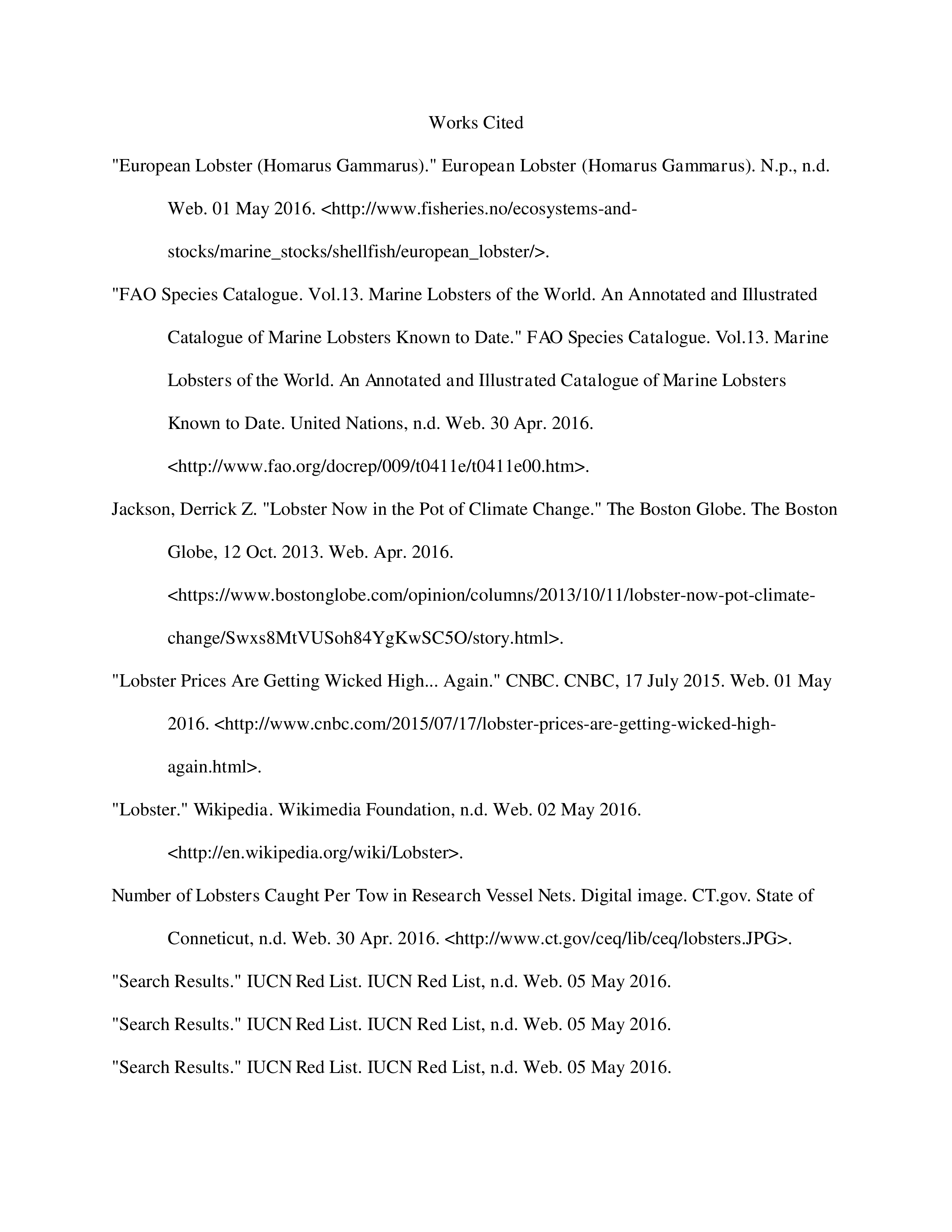Lobsters and Climate Change
William Olsker
The lobster is now in the net of climate change.
General Information
The lobster lives in the aquatic biomes (mostly cool water) near Maine, Europe and West Africa, and South Africa.
• Claws to attack prey or predators
• A hard shell for protection
• A strong tail
Zoom out to see the surrounding areas.
Zoom out to see the surrounding areas.
Zoom out to see the surrounding areas.
People who live in the areas near where lobsters live often go fishing for lobsters. Lobsters are considered a delicacy and can cost $12 per pound.
However, this is not what is creating the problems for lobsters. The perpetrator is climate change. Lobsters have stayed at the conservation level of Least Concern to this day. However, the populations have been decreasing lately.
Gallery

Effect of Climate Change on Lobsters
As waters warm, more and more problems are coming up for lobsters. Lobsters are cold-blooded animals; they are incapable of regulating their body temperature. As the water temperature rises, the temperature of a lobster's blood increases. As the temperature of the lobster's blood increases, it breathes in more oxygen. Oxygen is necessary for life, but at high levels it becomes dangerous. This has not become a problem until the recent years.
Conservation
According to the IUCN Red List as of 29-4-16:
The Homarus capensis (Cape Lobster) has a status of Data Deficient and a trend of decreasing
The Homarus americanus (American Lobster) has a status of Least Concern and a trend of stable
The Homarus gammarus (European Lobster) has a status of Least Concern and a trend of stable
Population over Time:
Works Cited

Written in HTML5, CSS3, and JS6
Code attribution is in the HTML source.
